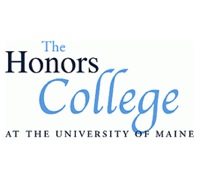Below is a summary of the abstract you submitted. Presenting author(s) is shown in bold.
If any changes need to be made, you can modify the abstract or change the authors.
You can also download a .docx version of this abstract.
If there are any problems, please email Dan at dar78@pitt.edu and he'll take care of them!
This abstract was last modified on March 14, 2023 at 1:06 p.m..

Bacteriophages are the viral predator of bacteria and have industrial applications as environmental bactericidal agents, but perhaps hold the most promise as an alternative to antibiotics in treating drug-resistant bacterial infections. Actinobacteria are a diverse group of Gram positive bacteria that include important pathogenic mycobacteria and non-pathogenic genera, such as Gordonia. Novel bacteriophage, Nebulosus, was directly isolated from a sample of compost in Orono, ME on the host G. terrae. Nebulosus is a siphovirus and belongs to subcluster A15, the only group of Gordonia phages that are members of a larger cluster composed of mycobacteriophages. Nebulosus is temperate and forms stable lysogens that are resistant to superinfection by cluster A15 phages. Its genome is 52,175 bp long, has 62% GC content and encodes 97 putative protein-coding genes and 3 tRNAs. The genome is organized like other cluster A phages with forward-transcribed structural genes on the left arm and reverse-transcribed early lytic genes on the right arm. Gp82 encodes the immunity repressor and like other cluster A15 phages, it encodes a ParABs system (gp33, gp34) rather than an integrase in order to maintain lysogeny. Comparative genomics among the A15 phages and cluster A phages will be conducted to better understand the relationship between Nebulosus and the cluster A Gordonia and Mycobacterium phages.
